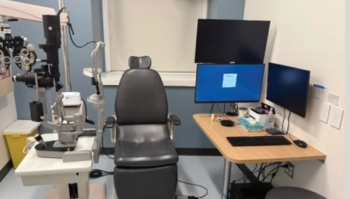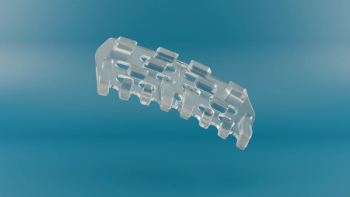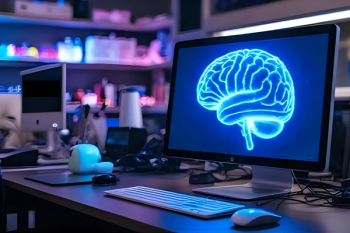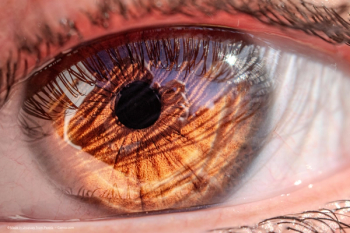
SFI allows integration of structural, functional data
New model produces results comparable with current glaucoma assessment methods
Key Points
The index has produced results comparable with current methods, said Michael V. Boland, MD, PhD, who described the model in a presentation at the annual meeting of the Association for Research in Vision and Ophthalmology. He is assistant professor of ophthalmology, Wilmer Eye Institute, Johns Hopkins University School of Medicine, Baltimore. Dr. Boland and Harry Quigley, MD, also of the Wilmer Eye Institute, developed the SFI.
In the clinic, a general diagnostic guideline for glaucoma states that changes in the optic nerve should correlate with changes in the visual field, Dr. Boland said. In the typical ophthalmology clinic, however, the patient will undergo a quantitative assessment of the optic nerve structure at one device and a quantitative assessment of optic nerve function at another.
Integrating quantitative data
The need to link structural and functional measures of the optic nerve has long been recognized, and some attempts have been made to combine them quantitatively. The latest such model, the SFI, defines the structure-function relationship as a function of the probability of abnormal function (field), the probability of abnormal structure (imaging), and the probability that the two are linked by nerve fiber layer anatomy. In this way, the SFI produces an estimate of the probability of an abnormal structure-function relationship for each point in the visual field.
The first step in designing and evaluating the SFI model was to define "normality" for visual field tests, optic nerve imaging, and the anatomic relationship between the two. New definitions were needed because current machines do not interpret a finding as abnormal until it is very abnormal (p < 0.05), Dr. Boland said.
Study population
A reference population was chosen by reviewing clinical databases at the Wilmer Eye Institute that contained tens of thousands of visual fields and scanning laser ophthalmoscope images, all of which were linked by billing data. Individuals were identified who had a billing diagnosis of suspected glaucoma, reliable visual field tests, images of at least acceptable quality, and no subsequent diagnosis of glaucoma in the records, resulting in a reference population of 1,662 eyes.
Patients with suspected glaucoma rather than healthy individuals were chosen as the reference population because they are the group that clinicians need to distinguish from those with disease, he said.
Dr. Boland and Dr. Quigley selected 500 left eyes and 500 right eyes from the eyes with suspected glaucoma to define normative distributions for the total deviation at each point in the visual field and for the rim area of each optic disc sector.
After establishing a reference population, the investigators went back to their clinical database to identify cases of glaucoma, selecting 895 eyes with the disease. They also used the remaining patients with suspected glaucoma who had not been used to define the reference population, selecting 558 eyes. To determine whether the SFI could identify glaucoma, they summarized each subject's SFI using the SFI-hemifield test, a modified version of the glaucoma hemifield test (GHT). They then used the SFI-hemifield test to perform receiver operating characteristic (ROC) analysis.
The SFI was compared with current measures of function, the GHT and the mean deviation of the visual field, and with current measures of structure, the rim area, and Moorfields classification from a proprietary tomograph (Heidelberg Retina Tomograph, Heidelberg Engineering).
The reference population and the group with suspected glaucoma were both 65% female, whereas the glaucoma patient group was 52% female. The reference population and those with suspected glaucoma both had a median age of 53; the median age of the patients with glaucoma was somewhat older at 65 years of age.
Study results
Results showed that the area under the ROC curve was 0.77; the optimal sensitivity and specificity were 80% and 65%. At specificities below about 70%, the ROC curve for the SFI also displayed higher sensitivity values than did the measures of field or optic nerve image. This lag in sensitivity may be due to some of the patients with suspected glaucoma actually having glaucoma, Dr. Boland said. Analysis of the SFI also is limited by the retrospective nature of the data because the "gold standard" physician diagnoses were based on the interpretation of fields and images in isolation.
He also compared the sensitivity and specificity of the SFI with current methods of diagnosis. The sensitivity and specificity of the proprietary automated perimeter (Humphrey Field Analyzer, Carl Zeiss Meditec) GHT were 58% and 84%, respectively; the figures were 64% and 67%, respectively, using the overall tomograph Moorfields classification system.
Newsletter
Get the essential updates shaping the future of pharma manufacturing and compliance—subscribe today to Pharmaceutical Technology and never miss a breakthrough.










































